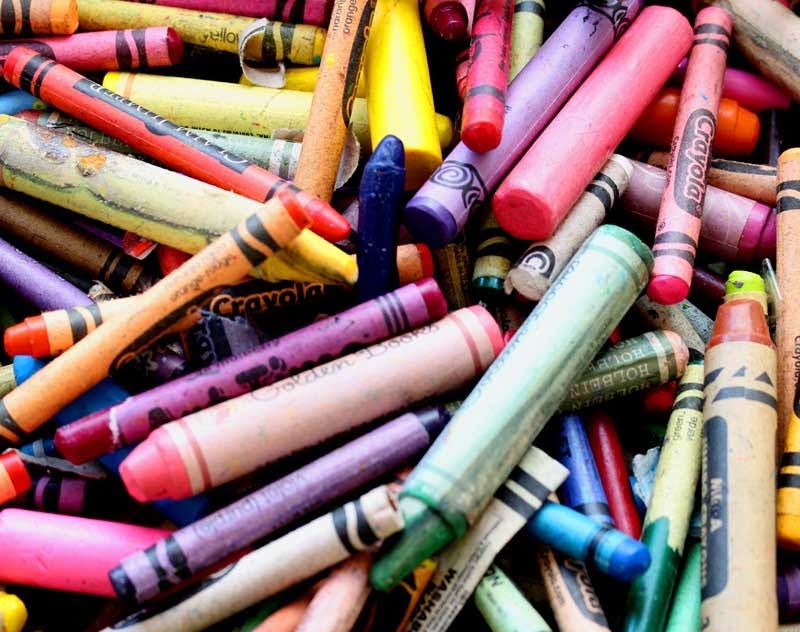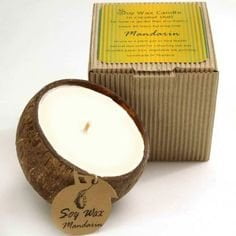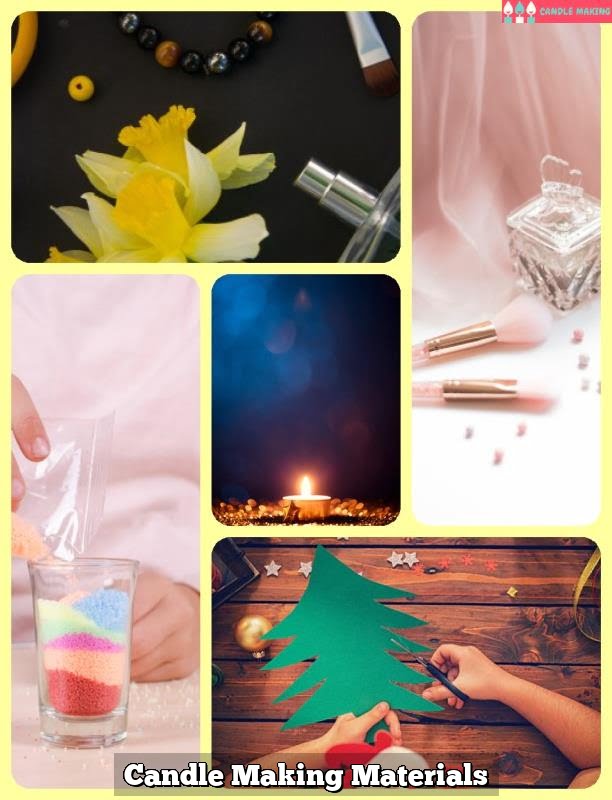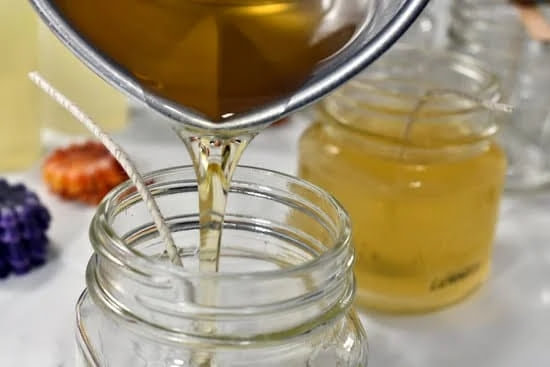Introduction
Candle making has an incredibly rich and long history in the UK, with some of the earliest records from as far back as 1000BC. Along with perfumed oils and incense, candles were first used in ancient spiritual rituals and ceremonies. As time progressed, candle making became a staple component of many people’s lives across Britain. In pre-electricity days, home lighting was produced mostly through candles or lamps that used seal oil. Candles were also utilised both in factories and churches – they lit night-time activities while providing heat during winter months.
Today, candle making is enjoying an increase in popularity among both hobbyists and professional makers alike. People are attracted to how creative the craft is, with the ability to modify their product to their own individual preferences. With such a versatile material on hand – wax – there are endless possibilities for incorporating different ingredients to alter not only scent but also colour and texture characteristics too. Additives can range from wildflower petals to glitter or ground herbs; indeed allowing crafters full freedom when it comes to design and aesthetic preferences. Additionally, because of the relatively low prices of materials needed for candle making, it’s potentially affordable for most people. Thus creating beautiful handmade items from either their own homes or small businesses supporting self-sustaining incomes
Explaining the basics of candle making materials
Wax is the main material used when making candles. The type of wax used can vary as there are two different types; natural and non-natural (synthetic). Natural waxes such as beeswax, soy wax or palm wax are all suitable for candle making and each has its own unique benefits, from environmental friendliness to price. Soy and palm waxes, for example, generally cost less than beeswax and tend to have better scent retention capabilities which makes them great for those looking to create scented candles.
The second key material is the wick. Wicks provide the fuel source to light up a candle by transferring heat energy from a flame into the surrounding air. Wicks are traditionally made from cotton threads but may also consist of paper braided core with other fibres incorporated such as zinc or tin-coated steel wire. Wick tabs help in keeping wicks straight during assembly as well as burning time stabilisation once lit.
Candle making materials can be purchased in most craft stores or online retailers such as eBay or Amazon UK.
Recommended candle making materials in the UK
Wax: The most popular wax used in the UK for candle making is paraffin or soy wax. Both of these types of wax are non-toxic and give a good scent throw in finished candles. Paraffin wax is more affordable, while soy wax produces cleaner burning candles which last longer with less soot.
Wicks: For making homemade candles, you will need to choose the right wick size for your project depending on the type of container and the thickness of your wax. There are metal-based flat braided or round braided cotton wicks available in various sizes from a variety of suppliers across the UK.
Dye: Candle dye comes in either powder or liquid form and can be used to colour the wax before it is poured into moulds or jars. A little goes a long way when using dyes, as adding too much can cause your finished candles to have an off-putting scent.
Essential Oils: Essential oils are natural substances extracted from plants that are often used to enhance the scent of homemade candles with natural fragrance notes. Found in health food stores and online shops across Britain, they come in a variety of scents including lavender, rosemary and peppermint.
Fragrance Oils: Fragrance oils are also used for adding strong aromas to candles as they provide an especially intense smell that lasts longer than essential oils do. They come in dozens of different scents such as sandalwood and cinnamon which can be blended together to create unique fragrances.
Where to buy candle making materials within the UK
Physical Stores: Crafting stores located in the UK are a great source for finding candle making materials. Supplies such as wicks, wax, moulds and fragrance oils can be found amongst the many aisles stocked with crafting products. It’s worth checking the shop’s opening times since not all crafting stores have the same business hours. Moreover, shops may have special offers or exclusive deals on select items of candle making supplies. Make sure to check out different physical shops within the UK to compare stock and pricing options.
Online Retailers: Shopping online is an increasingly popular platform for accessing candle-making materials while also looking at competitive prices. Relying on customer reviews helps ensure quality as well as finding ample information from previous customers about various suppliers on product offerings and delivery services. Searching for “candle making supplies in the UK” leads to numerous websites offering low-cost packaging for bulk orders as well as DIY kits containing all necessary components for beginners getting into the craft of making candles. For any purchases made online, it’s important to review a retailer’s delivery policy prior to purchasing materials – delivery fees can quickly add up when buying heavier items like wax and fragrances).
Best value for money candle making materials in the UK
When looking to find the best value when shopping for candle making materials in the UK, there are a few key things to keep in mind. First, determining the type of wax you need is important and depends on the type of candles you’re planning to make. If you’re looking for a basic paraffin wax, it is fairly inexpensive and can be found in most craft stores. If you plan on making soy wax and beeswax candles, these tend to be more costly, but many of the big online suppliers like Love Aroma offer discounts with bulk orders.
For wicks, 100 percent cotton wicks usually give the best burn time. You may also find some good deals with bamboo or wooden composite wicks if you’re looking for an eco-friendly option. When using any kind of wood based wick, pre-treating it with borax solution is highly recommended before use as it will help reduce soot issues and give better burning results. Pre-made batches come in various lengths and diameters that fit different candle types, saving time and cost over buying them individually.
For fragrance oils, companies such as Kerikit offer top quality fragrances at reasonable prices compared to other vendors. Lastly, make sure your containers are heat resistant if they will retain hot wax – polycarbonates or polypropylene plastics are ideal for this purpose – as lower grade plastics may melt when exposed to extreme temperatures like near boiling wax!
Alternatives to candle making materials available in the UK
Eco-friendly options include beeswax, soy wax, pure palm wax, and vegetable waxes derived from sources such as coconut and rapeseed oil. Each has its own distinct melting point and burning characteristics.
Sustainable wicks that produce a clean burn without soot or smoke include eco cotton, organic hemp core and wooden wicks.
To ensure that candle making is truly sustainable all the way through to the end user, biodegradable or compostable packaging is an option. Materials like paperboard or recycled cardboard could be used for protection during transit and storage. Other elaborate packaging solutions may include boxes made of sustainably sourced wood with a dried flower topping off the crafty touch. Labels could be printed on FSC certified paper and designed to be reused for gift cards when not in use.
All these materials are widely available in most craft stores across the UK where further guidance can also be found from experienced candle makers.
Summary
Candle making is a fun and creative hobby that brings out the artist, innovator, and crafter in anyone. To do it well, however, you need to select quality materials. The UK offers a wide variety of candle making supplies, including waxes (soy, beeswax, paraffin, coconut), wicks (wooden cored wicks with pre-waxed tabs or sustainers), fragrances (essential oils and fragrant oils), dyes (both liquid and powdered pigments or micas), candle containers (jars for tealights or other types of candles), embeds such as dried floral arrangements or resin pieces for floating candles, and more.
When sourcing materials for your candle making project in the UK, make sure you are getting quality items from established brands. Research online retailers as well as local craft stores to compare prices since large orders can often save on cost. Be mindful of flashpoint temperatures when considering waxes and fragrances; if the temperature is too low then it can cause a dangerous fire hazard when burning your creations. Additionally, be aware that corresponding efficiencies may vary depending on which type of wax you use. For instance, soy wax must typically have more energizing agents than paraffin waxes in order to perform adequately. With this information in mind you should be able to find all the necessary materials on your own or through a variety of suppliers around the UK who offer kits with everything you need already put together from start to finish!

Welcome to my candle making blog! In this blog, I will be sharing my tips and tricks for making candles. I will also be sharing some of my favorite recipes.





